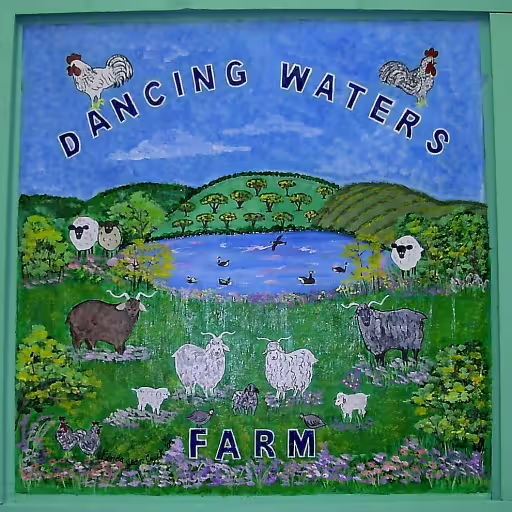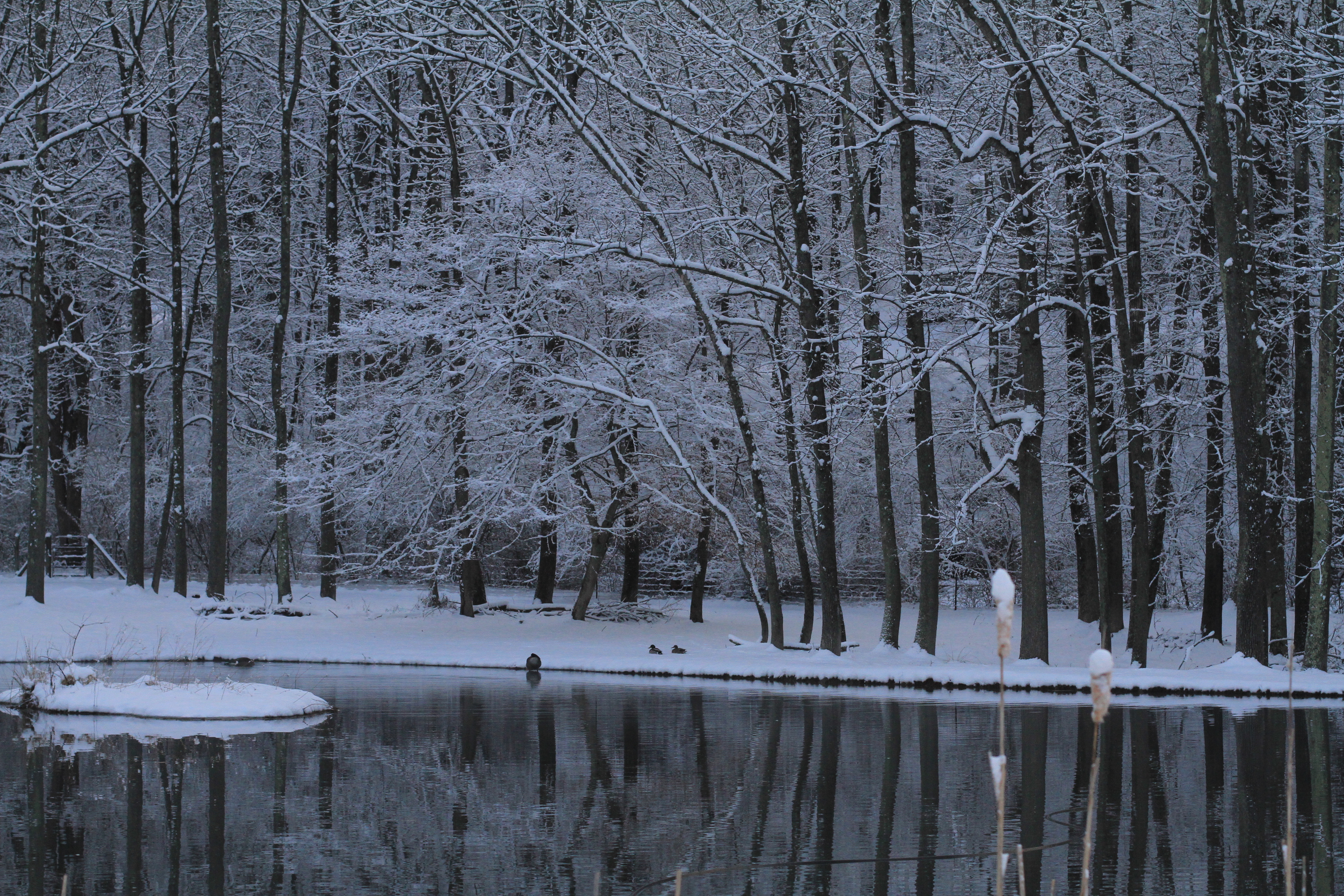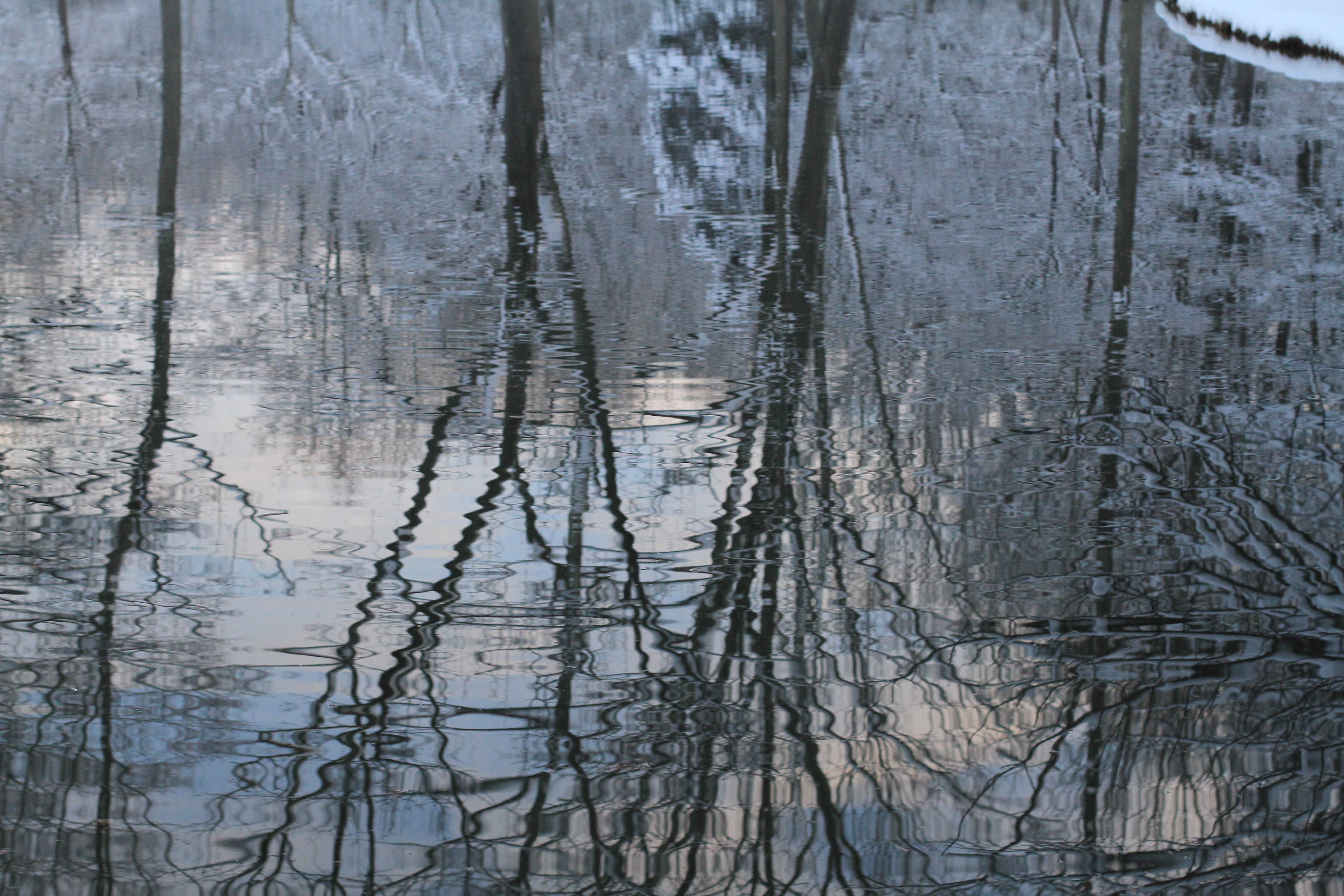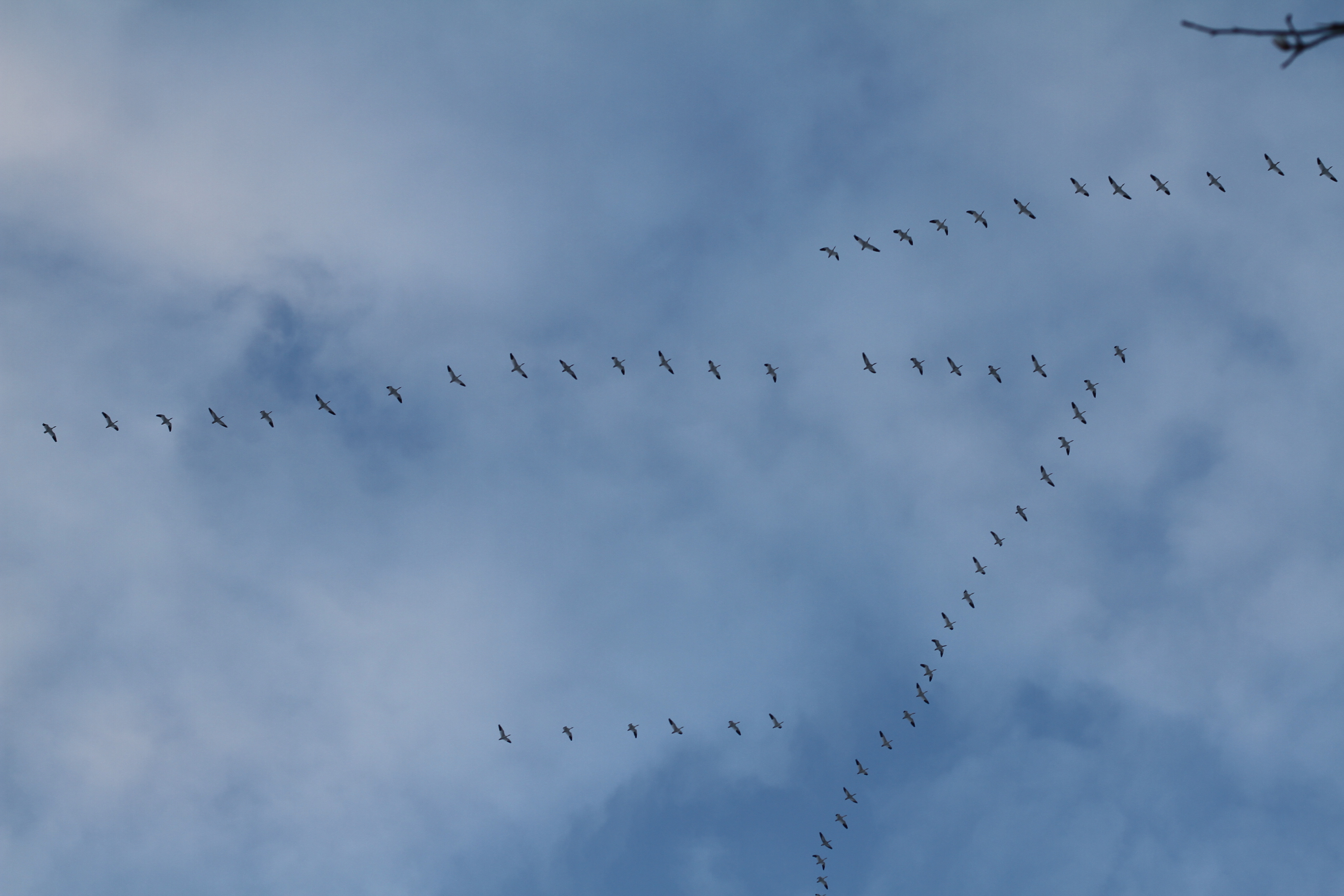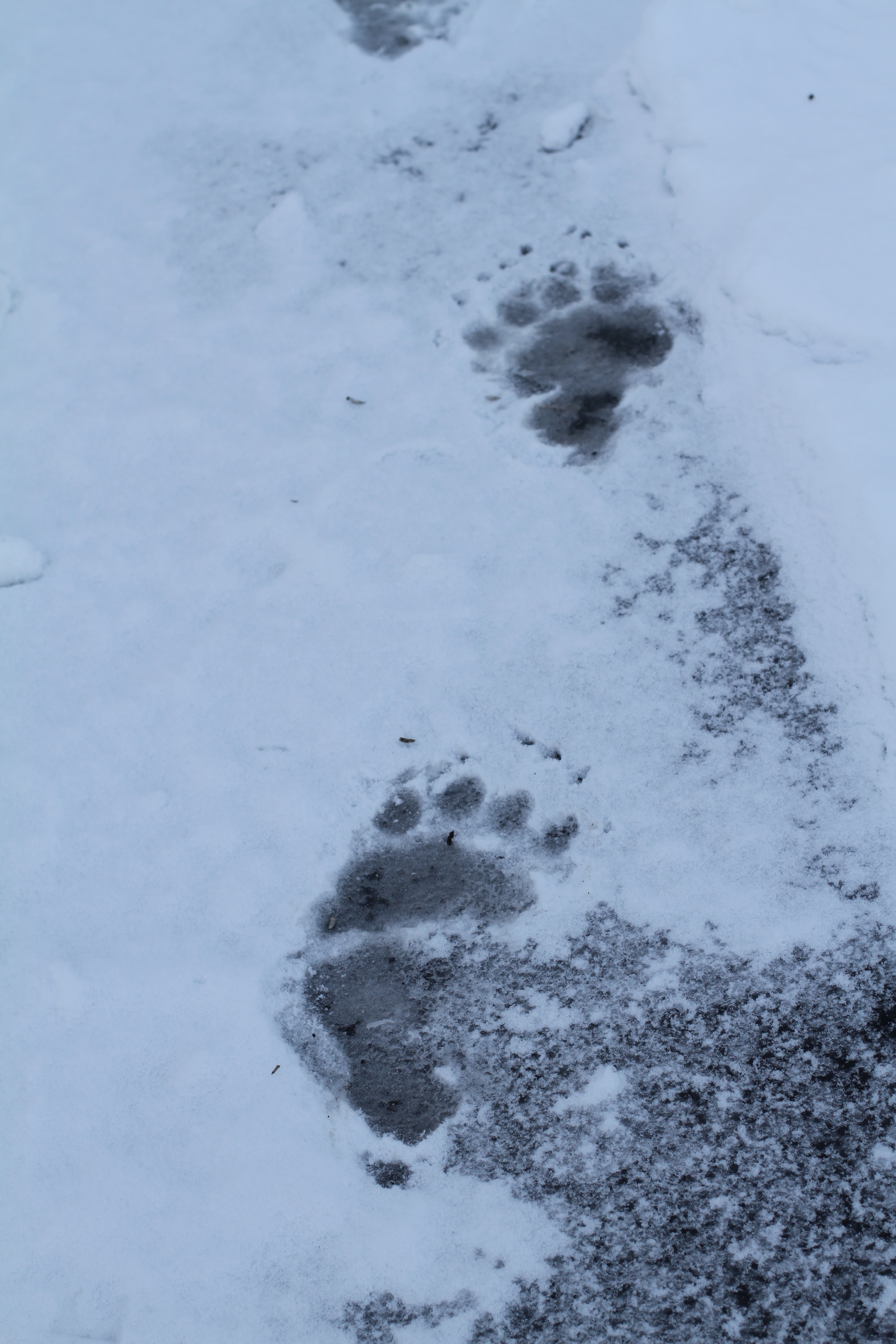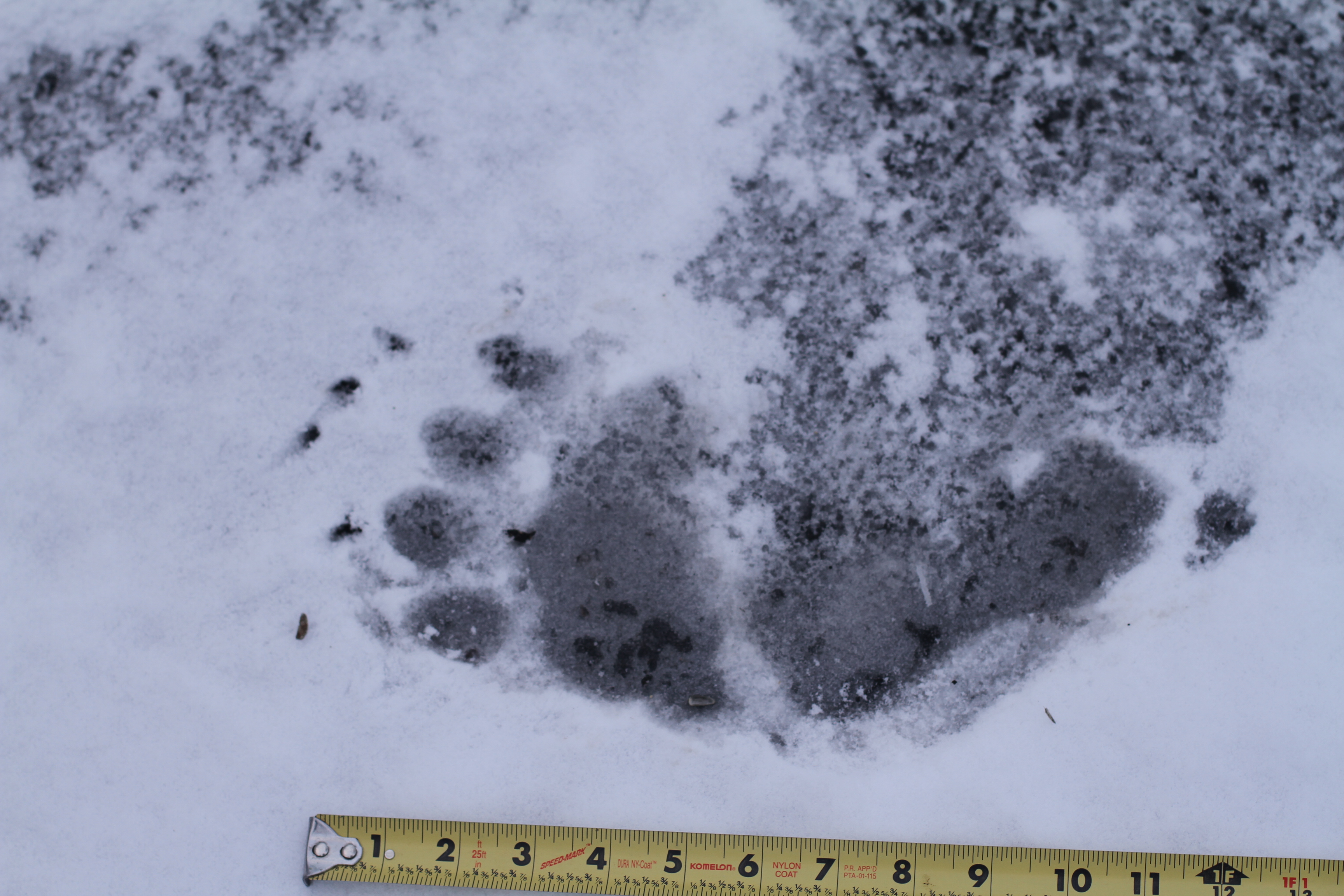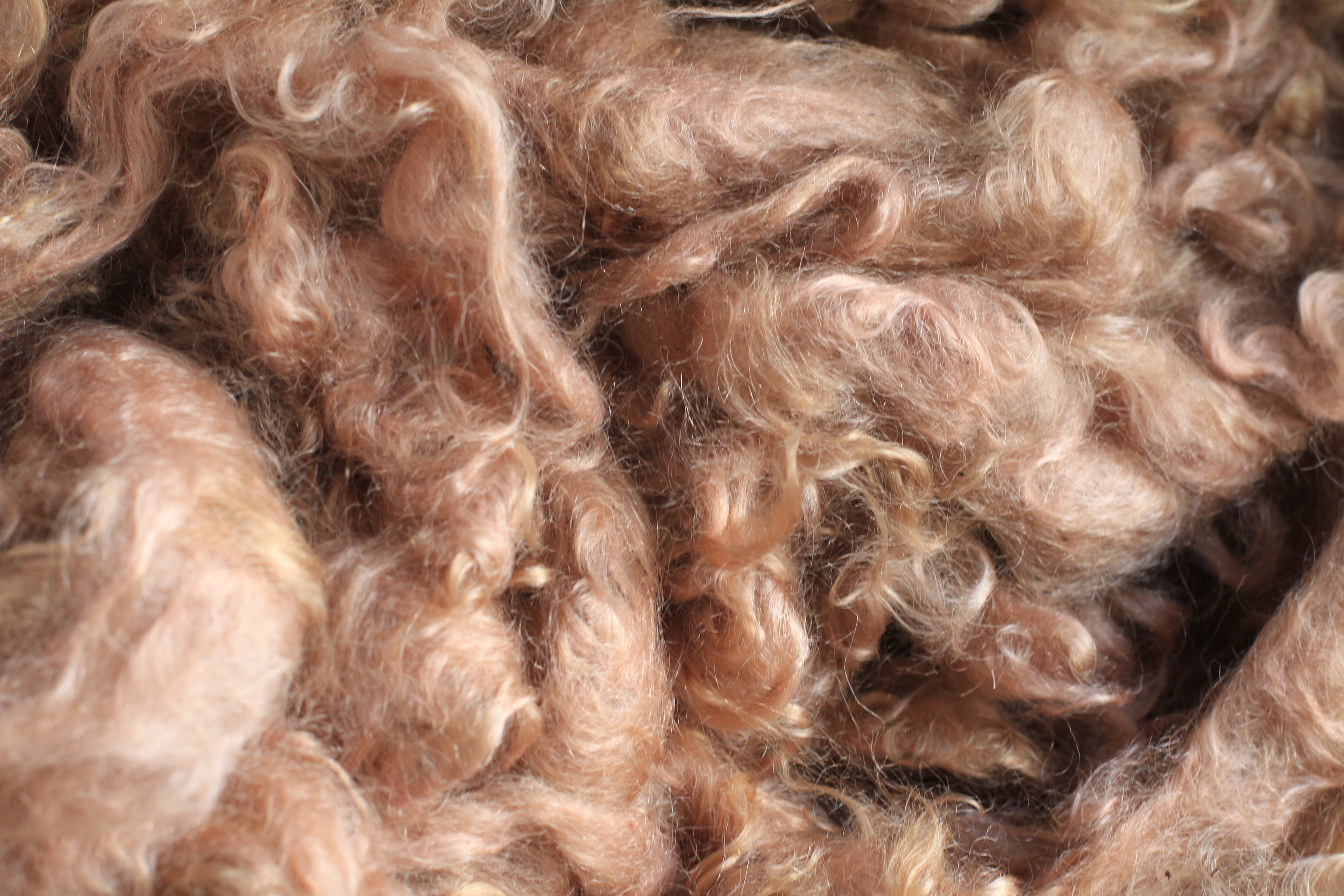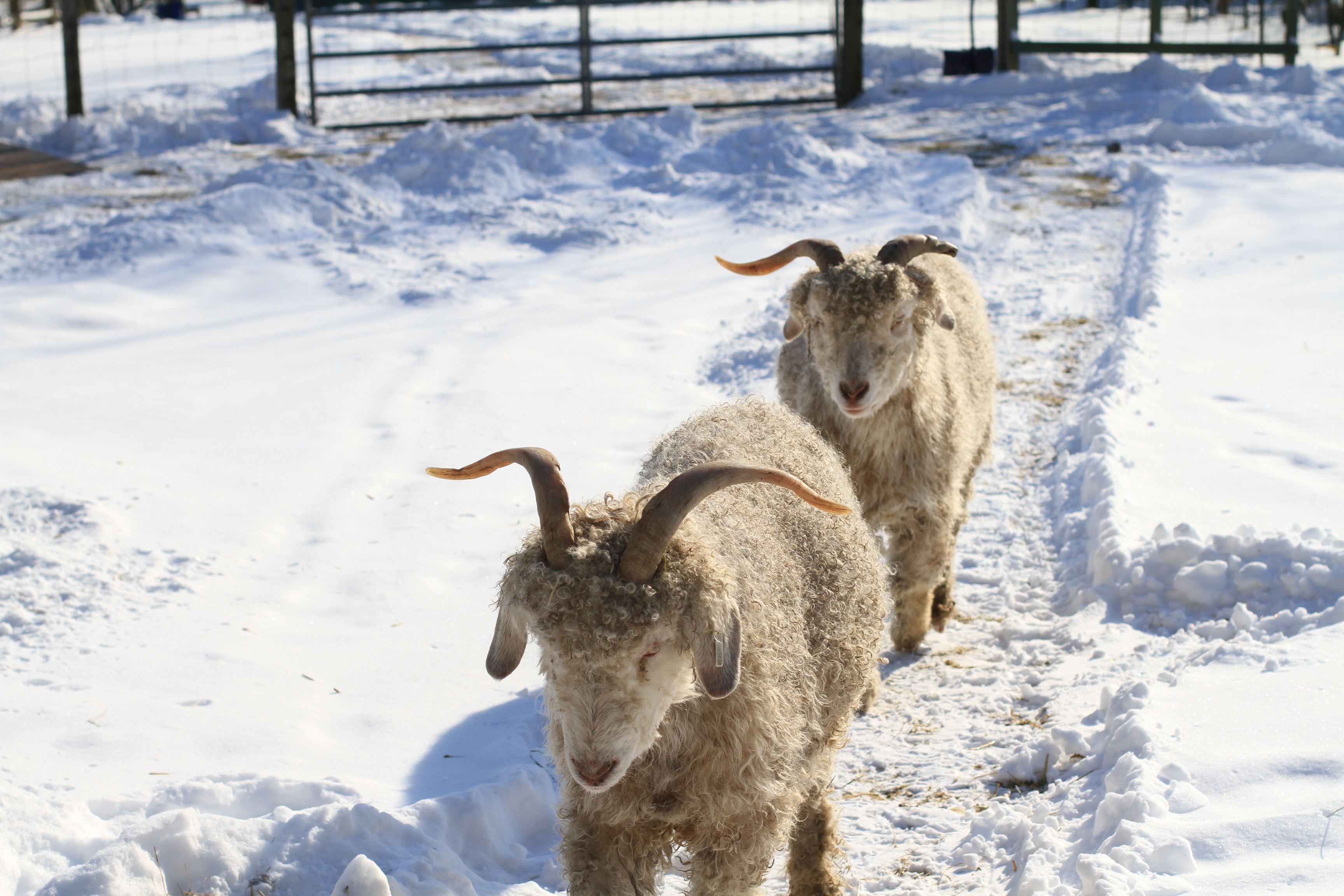The first day of Spring brought nearly 5 inches of wet snow. An early morning walk after opening up the goats and chickens revealed many beautiful sights.
A large group of Snow Geese passed over head, possibly on their way to Merrill Creek reservoir. The sun lit up their white bodies and wings so that they glowed. The picture does not do the scene justice. Their calls echoed off the hills as group after group streamed past.
Because of the snow there was evidence of numerous visitor’s over night. There were opossum tracks out front, running between the hay feeders and the compost pile, and many others that could not be identified because the snow was so wet it didn’t capture crisp clear prints. Near the house where an initial pass at shoveling had been done there were very clear and awesome prints of a black bear! A ruler is shown to fully appreciate the size of this bear. The back prints measured 12 inches! Just look at those toenails – wow!
Following the tracks revealed that the bear had come down our western neighbor’s driveway, over the fence into our marshy area (where he looked around for awhile), to within 20 feet of the fenced area in front of the barn where the does are locked in at night, over the fence directly behind the house (fence bent!), up to the garage, and then over to the eastern creek and through to the next property. Luckily he did not decide to sample goats or chickens on his trip through the farm!
